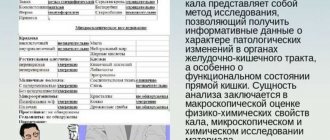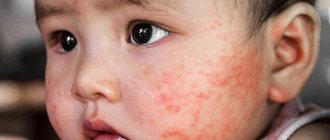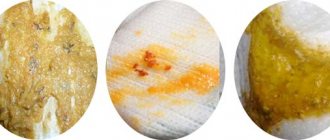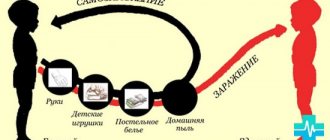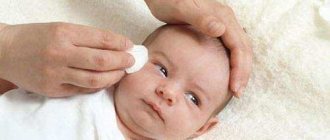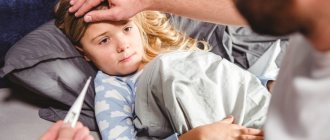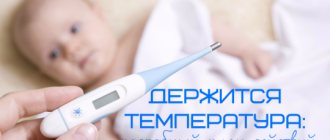Parents of young children often face such an unpleasant problem as worms. This situation causes discomfort to all household members, because a child infected with worms is often capricious, does not sleep at night and sits at home every day - does not attend kindergarten or school.
However, all these troubles are only “little flowers” compared to the health problems that can arise in a child infected with worms if worms are present in the feces and there is no necessary treatment.
What are pinworms
Pinworms are roundworms that are light in color and small in size. The length of their body can reach 10 mm. In Latin they are called Enterobius, hence the name of the diagnosis - Enterobiasis, which means the presence of pinworms inside the body, causing intoxication. Like any other helminths, pinworms have a special structure of the oral cavity, with the help of which the worm is securely attached to the intestinal walls. To do this, he uses special vesicles and penetrates the intestinal mucosa or appendix. To see more details, see photos of pinworms in children. Helminths enter the body of a healthy person along with food, after physical contact with an infected person. However, the danger of this disease lies not only in this. The female helminth is capable of laying about 15,000 eggs at a time, crawling out of the intestines and leaving larvae around the anus. Consequently, the patient begins to itch this place; when scratching, the eggs get under the nails and throughout the day spill out onto the surface of the furniture, door handles, and even into food. After a healthy person comes into contact with infected furniture, the eggs cling to his hands and end up in his food. Children are the most susceptible category of people to pinworm infection because they do not think about washing their hands before eating and put their hands in their mouths throughout the day.
Once in the body, the eggs mature and develop. They use everything that passes through the intestines as nutritional products, and also suck out useful substances from the host’s blood.
Types of worms
In fact, worms are worms that live in the human body; they can affect any internal organs! But what do worms look like in a child’s stool, you ask? They can be of different sizes (from 0.5 cm to 30 m!), different colors and can live in the body for many years.
The following types of worms are most often found in children:
- pinworms;
- roundworms;
- whipworms;
- toxocara;
- nematodes;
- tapeworms
Thin, small white worms in a child's stool are most likely pinworms .
Their length does not exceed 1 cm. This disease is called enterobiasis and is characterized by itching of the anus, restless sleep, and irritability. As a rule, pinworms in a child’s feces live no more than 4 weeks, but as a result of self-infection of the child with dirty hands, these parasites can be present in the body for years. Roundworms are also white worms, but their length, unlike pinworms, ranges from 1 cm to 40 cm . Damage to the body by roundworms is called ascariasis. Individuals come out together with the feces in clumps, several pieces at a time, so it is much easier to detect roundworms with the naked eye than pinworms. Abdominal pain, nausea, lack of appetite are signs of ascariasis.
Whipworms - 5-cm white worms in a child's stool with one thin end can cause bloating, excessive salivation, headaches, insomnia, irritability, and even seizures. Infection with whipworms is called trichuriasis. Unlike pinworms, whose life span lasts no more than 4 weeks, they can live in the body for more than 5 years!
Toxocara are large white worms up to 18 cm long . You can get toxocariasis by contact with infected animals (through wool), with contaminated soil, or after eating meat from domestic animals infected with toxocariasis. These parasites can live in the small intestine, under the skin or in the eyes and stay there for up to 10 years! They cause nausea, diarrhea, allergies, and also disrupt blood composition. After drug destruction, Toxocara is excreted in the feces.
Nematodosis is damage to the body by nematodes - roundworms up to 5 cm in length . The main symptoms of the disease: impaired general condition, low-grade fever (from 37 to 38 degrees), enlarged lymph nodes, liver, spleen. Nematodes are detected in all domestic animals: cats, dogs, cattle. You can become infected with nematode disease by contacting animals that carry the disease, as well as by eating agricultural products obtained from sick livestock.
Infection with flat tapeworms (cestodes) is called cestodosis. Cestodes are the largest parasites, their length can reach 30m! Parasites can be introduced into the body by eating undercooked meat or fish, or by living in poor conditions. It is cestodes that are used for the purpose of losing weight - first they are specially infected with them, and then, after the body weight has decreased, they are removed from the body with feces!
Symptoms caused by pinworms
It is difficult to independently determine the diagnosis of enterobiasis, especially if you do not know the symptoms of infection. As a rule, they are hidden, but some were still identified:
- Severe itching, burning or sores in the anal area caused by irritation of the female's skin when laying eggs. Consequently, the infected person scratches the area, allowing the helminths to migrate through the environment and infect healthy people.
- Intestinal discomfort, flatulence, diarrhea and other gastrointestinal problems.
- A sharp decrease in body weight.
- With sufficient absorption of glucose, the body requires more of this enzyme.
- Exacerbation or emergence of new chronic diseases.
- The appearance of the skin deteriorates, and the color of the skin may change. This is caused by intoxication, while the body tries to reduce the load on the excretory systems, and indicates a problem within the body.
- A rash appears all over the body. At a consultation with a gastroenterologist, a specialist will notice this symptom, begin to examine the digestive system and discover pinworm worms, as in the photo.
Causes of infection
Enterobiasis occurs as a consequence of infection through the oral-fecal or contact-household route. After penetration into the body, roundworms emerge from the eggs, which do not exceed 1 cm in size. The intestines become their habitat. When laying eggs, the female moves closer to the anal sphincter, which causes a strong itching sensation. The fertilization cycle lasts 6 hours, after which white worms can be detected with the naked eye in the baby’s stool. The most common routes of infection:
- contact with any objects that an infected child has handled (dishes, toys);
- if the baby plays in the sand;
- contact with pets;
- eating unwashed vegetables and fruits, or other products that have not undergone the necessary heat treatment.
Causes of pinworm infection
First of all, the cause of infection by helminths is failure to comply with basic hygiene standards, biting nails, improper washing of food, etc. At the same time, few people think about the possibility of infection, therefore they do not pay attention to the safety of their family, without meaningfully spreading pinworm eggs (photo).
You should also wear gloves when working in the garden. It is better to protect children with wounds from the street for several days until complete recovery, since dangerous microbes, bacteria, and human pinworms can penetrate microcracks and wait in the wings.
Diagnosis of pinworms
Detecting pinworms is a procedure that every adult and child periodically encounters. It is carried out in several ways:
- A swab is taken around the anus and examined under a microscope. In this case, the laboratory technician looks for helminth eggs, which can cause an entire epidemic in a kindergarten or other public institution. Before taking this test, you should avoid washing your face in the morning, showering, bathing, and wet toilet paper.
- Analysis of calla lilies for oviworm. At the same time, a section of feces is examined in order to detect pinworm eggs in children (photo). This method allows you to determine the result, the accuracy of which is 90%.
It is recommended to follow the rules for taking tests and take the 2 tests described above at the same time. This will allow you to find out the 100% result, prevent an epidemic or begin timely treatment. Additionally, the doctor may prescribe: gastroscopy and ultrasound of the abdominal cavity.
Clinical symptoms
The appearance of white worms in a child’s stool is not the only symptom indicating the development of enterobiasis. Additional symptoms are:
- The appearance (especially at night) of a strong feeling of itching around the anus. This is explained by the female leaving the rectal lumen to lay eggs. The symptom disappears after 1 or 2 days, and reappears a month later, when a new generation of parasites has been deposited.
- In children, emotional excitability increases as a result of continuous night itching. This causes insomnia.
- Frequent scratching in the anus and perineum can cause a weeping surface, which is a provoking factor in the development of dermatitis or eczema.
- During night sleep, the symptom of teeth grinding (bruxism) occurs.
- Pain in the lower abdomen may appear, with the parallel development of increased gas formation (flatulence). Sometimes there is a disorder of the act of defecation in the form of diarrhea or constipation.
- An increased concentration of harmful toxins released during the life of helminthic infestations causes the development of dysbacteriosis or an allergic reaction.
- Headaches with a feeling of constant nausea cause lethargy in the child, which causes problems during learning.
Treatment with pharmaceuticals
When getting rid of worms, you should take not only anthelmintic drugs, but also sorbents that reduce intoxication of the body and eliminate the remains of dead worms.
- Medicines: Pirantel, Vormil, Vermox , etc. exist in the form of tablets and suspensions, which makes it easier for adults and children to take the medicine. The use of the medicine is required 1 time (the dose prescribed by the doctor). After 7 days, you need to take a control dose of the medicine in order to destroy the remaining worms.
- Sorbents should be used from 1 day after (taking the first dose of the medicine) and for 2-3 weeks.
- Hepatoprotectors – reduce the harmful effects of chemicals. drug on the body.
- Anti-disbacteriosis drugs - allow you to maintain the normal microflora of the body: Linex, Gepabene, etc.
Diagnosis of worms
To confirm or refute your guesses as to whether children have worms in their feces, the child should be taken to a pediatrician. After conducting an initial examination, the doctor will make you the following appointments:
- will write out directions for a general blood test;
- will recommend donating blood from a vein for an enzyme immunoassay for parasites to identify their presence and type;
- take a stool test for dysbacteriosis and for eggs of protozoa and parasites. The last study must be carried out at least 3 times with an interval of 2-3 days;
- do a smear and scraping for worms;
- undergo an ultrasound, x-ray and computed tomography to find out if there are worms in the internal organs.
If the diagnosis is confirmed, the doctor prescribes honey. drugs. The course of treatment will consist of 3 stages: preparation of the body (sorbents + antihistamines), anthelmintic therapy (suspensions, suppositories, or tablets) and cleansing of the body (sorbents, choleretic drugs, enemas to remove parasites).
After being destroyed with medication, all the worms come out safely along with the feces!
